Power steering fluid leak
Fix power steering fluid leak
Power steering uses a hydraulic fluid to operate the steering gear. The fluid is pumped at high pressure through steel/rubber lines to the steering gear. You should never have to add power steering fluid to the reservoir since it’s a closed system. If you discover the fluid level is down, chances are you have a power steering fluid leak. Here are the most common sources for a fluid leak:
Power steering leak causes
Leaking power steering high pressure line
A high pressure power steering line can reach 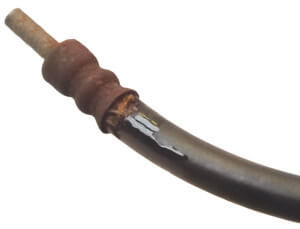 pressures up to 2,000-psi. Over time, that pressure can cause leaks at the crimp connector where the rubber hose meets the steel line. A high pressure power steering line leak can never be fixed with a stop leak product; there’s just too much pressure in that line for a stop leak product. The line must be replaced or a new section installed.
pressures up to 2,000-psi. Over time, that pressure can cause leaks at the crimp connector where the rubber hose meets the steel line. A high pressure power steering line leak can never be fixed with a stop leak product; there’s just too much pressure in that line for a stop leak product. The line must be replaced or a new section installed.
For more information on splicing in a new section of hose, see this post
All power steering fluids aren’t the same and there’s no such thing as a “universal all-makes, all-models power steering fluid.” See this post to learn about the differences in power steering fluids.
Leaking power steering return line
After the fluid has been pumped through the steering gear, it returns to the reservoir through the return line. Since this is a low pressure line, car makers usually use a low pressure rubber hose. Age and heat can deteriorate the rubber portion. It’s usually cheaper to just replace the entire line. But there are ways to replace just the leaking rubber portion by splicing in a new section, as long as the leak isn’t at a crimp connector. Never use power steering stop leak to fix a leak in a return line; the rubber is too aged and deteriorated and the stop leak won’t fix the leak for long
Power steering leak at the fittings or O-rings
The steel portion of the power steering lines seals 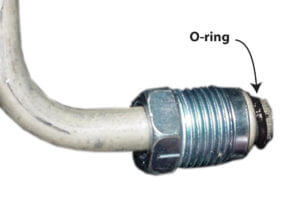 at the pump and the steering gear with either a flared fitting or an O-ring. If the line has a flared fitting and the leak is at the fitting, try tightening the fitting. However, if the fitting uses an O-ring, tightening may make it worse. DIYers and pros often overtighten O-ring fittings. That causes the O-ring to split and leak. If you’ve had work done on your power steering and it’s now leaking at a fitting, chances are the fitting is either over or under-tightened. Remove the fitting and check the O-ring for splits and cracks. If you find that, simply replace the O-ring. Then look up the torque spec for that fitting. You’d be surprised at how low the torque spec is. It’s often less than 15-ft/lbs.
at the pump and the steering gear with either a flared fitting or an O-ring. If the line has a flared fitting and the leak is at the fitting, try tightening the fitting. However, if the fitting uses an O-ring, tightening may make it worse. DIYers and pros often overtighten O-ring fittings. That causes the O-ring to split and leak. If you’ve had work done on your power steering and it’s now leaking at a fitting, chances are the fitting is either over or under-tightened. Remove the fitting and check the O-ring for splits and cracks. If you find that, simply replace the O-ring. Then look up the torque spec for that fitting. You’d be surprised at how low the torque spec is. It’s often less than 15-ft/lbs.
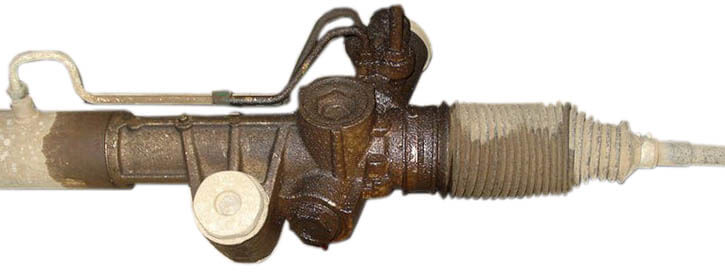
Power steering fluid leak from fittings
Power steering leaking at the steering rack or steering gear
If your vehicle has rack and pinion steering, you’ll often find fluid in the expansion boots at either end of the rack. That’s a sign that the end seals have failed. But it’s also a sign of wear in the rack, so replacing just the end seals usually doesn’t solve the problem. The fix is a new or rebuilt rack. Power steering stop leak will not fix this kind of leak because the rack is a moving part. Stop leak products never work on moving parts. Worse yet, stop leak products can gum up the entire system. Don’t use them.
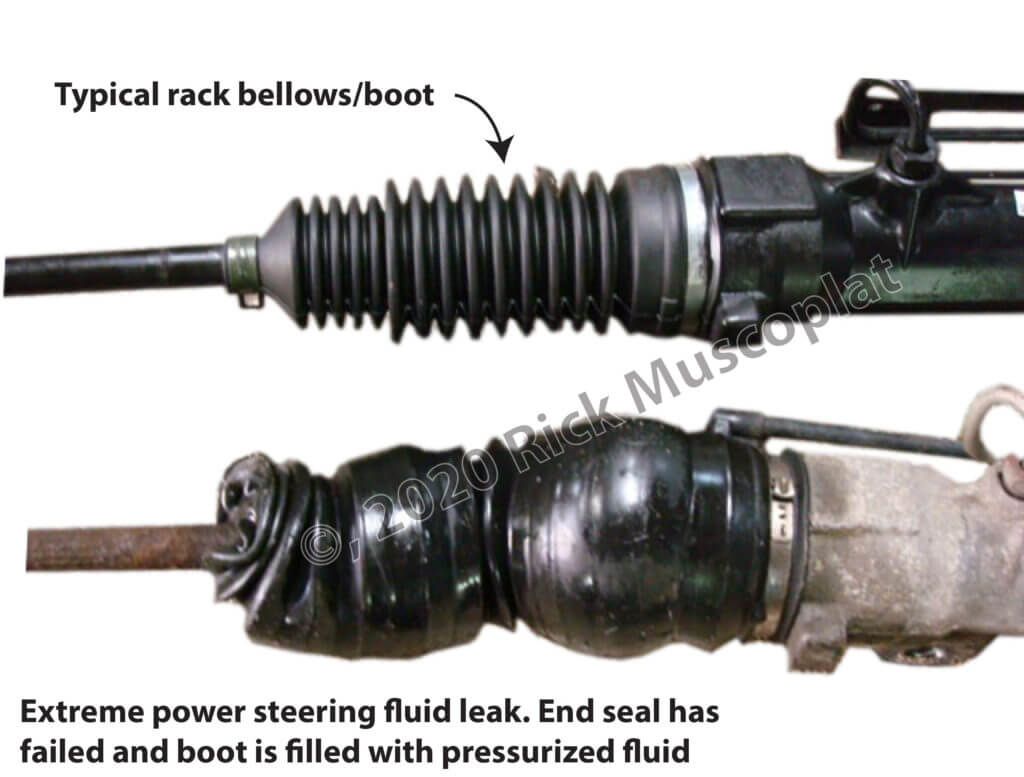
To learn more about power steering rack replacement costs, see this post
If your vehicle has a traditional recirculating ball steering gear,
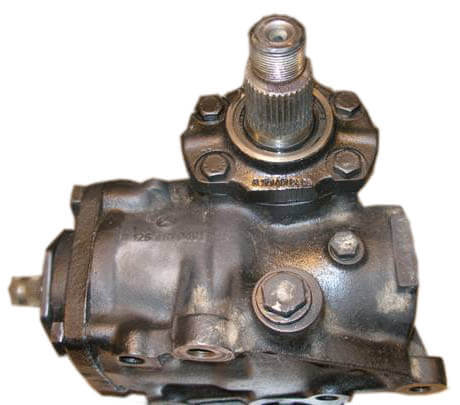
Recirculating ball steering gear
it may be leaking from the pitman arm seal. That’s something you can repair without having to replace the entire gear. You’ll need a pitman arm remover tool and a seal installation tool.
Power steering leak at the pump
There are 4 common power steering leak points at the pump:
High pressure line fitting
Return line connection
Pump shaft seal
Reservoir seal or gasket
For line fitting leaks, see my comments above. If the pump has an integral reservoir, the O-ring seal may have failed. That can be replaced, but it may be cheaper and easier to install a rebuilt pump.
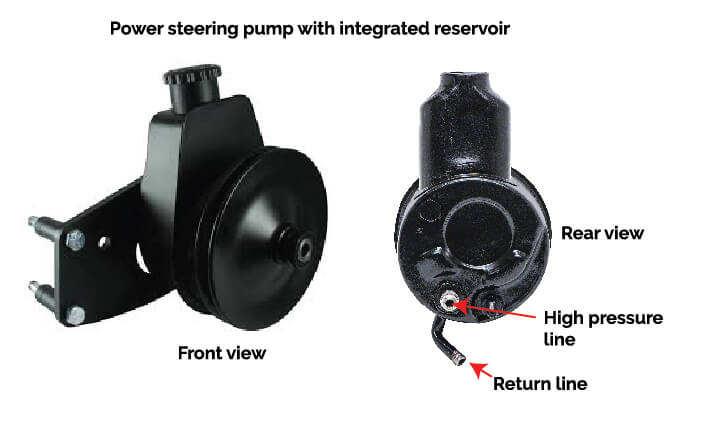
A failed power steering shaft seal can 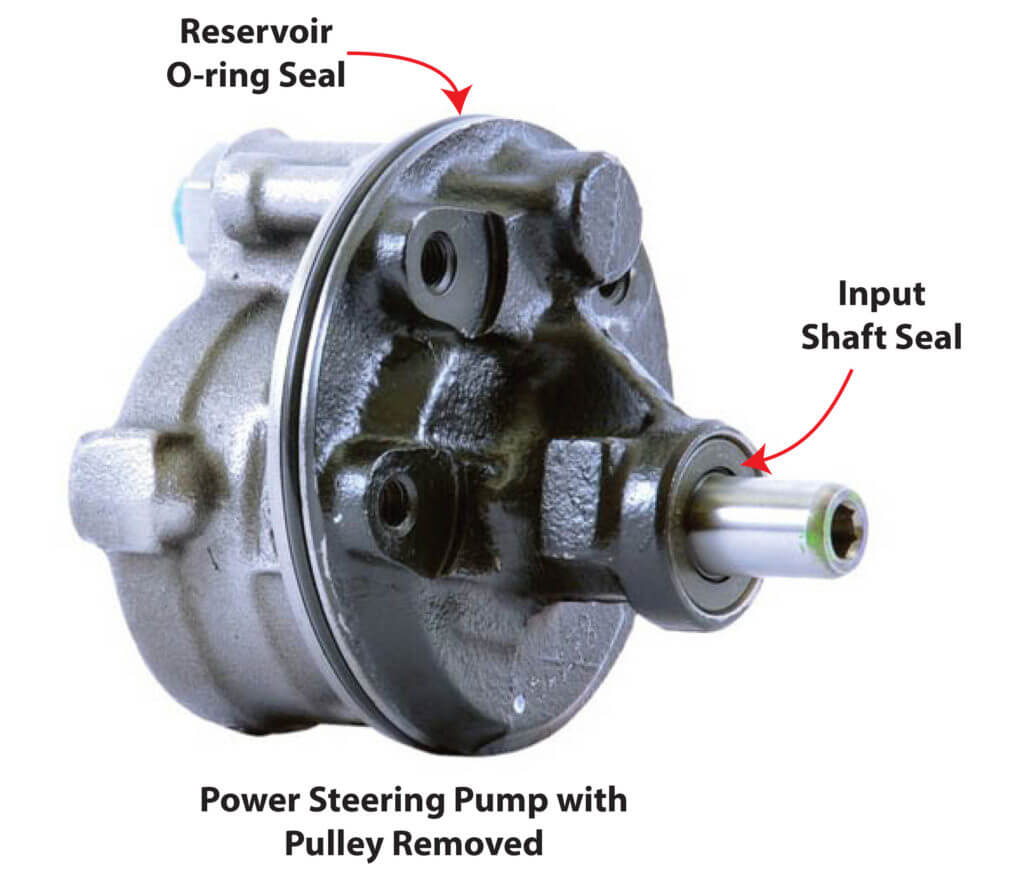 also be replaced. However, a failed shaft seal is often the sign of a worn input shaft. You’ll have to remove the power steering pump pulley to install a new seal and that requires a special tool in most cases. The seal is cheap and it might be worth a try to replace it, but if that doesn’t stop the leak, you’ll need a new pump.
also be replaced. However, a failed shaft seal is often the sign of a worn input shaft. You’ll have to remove the power steering pump pulley to install a new seal and that requires a special tool in most cases. The seal is cheap and it might be worth a try to replace it, but if that doesn’t stop the leak, you’ll need a new pump.
©, 2020 Rick Muscoplat
